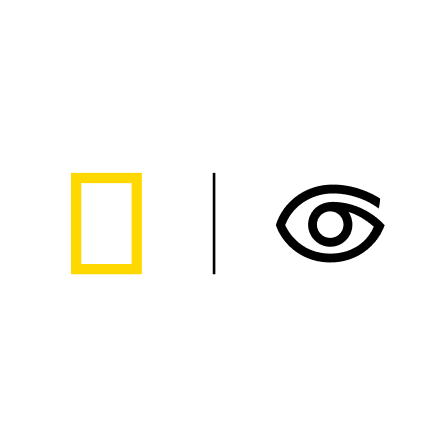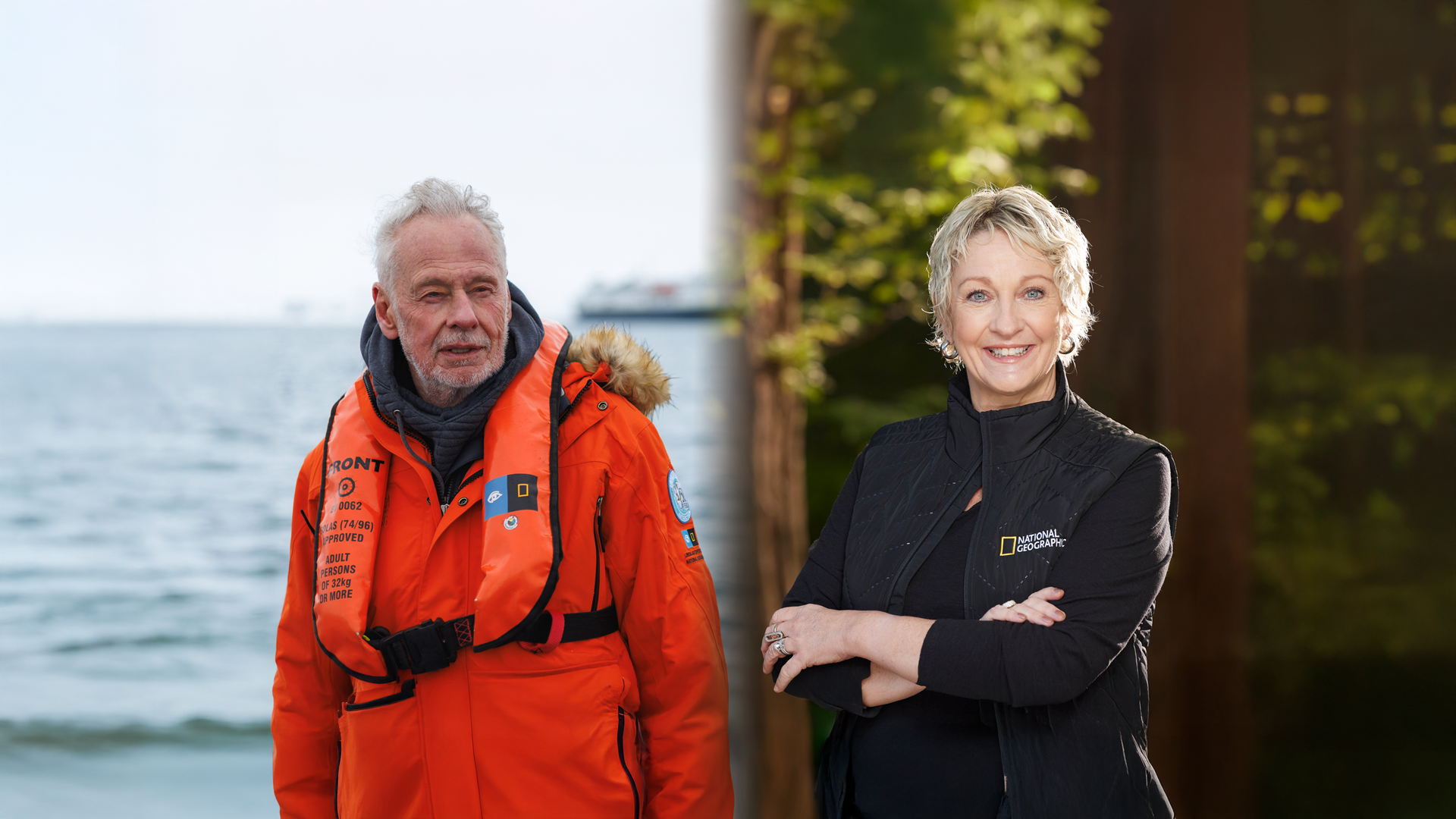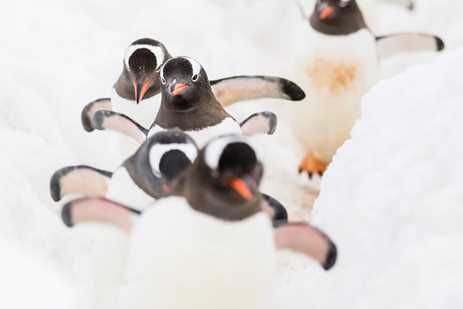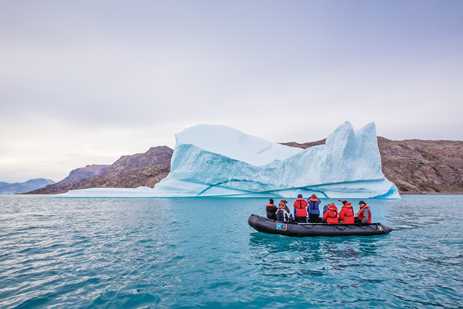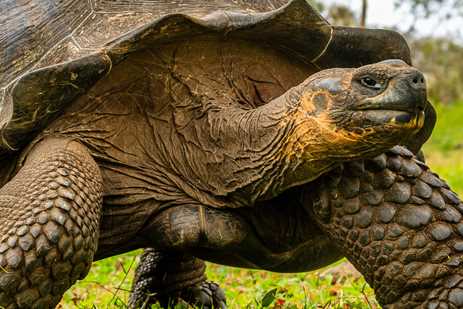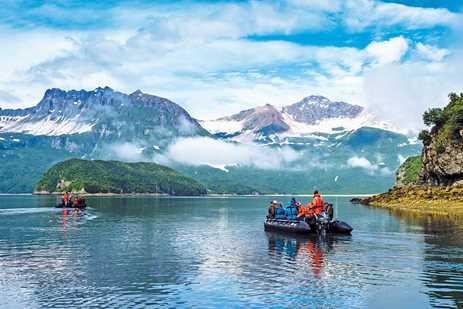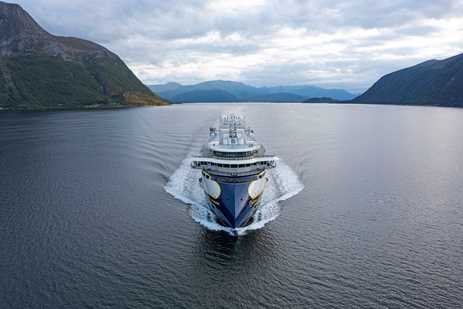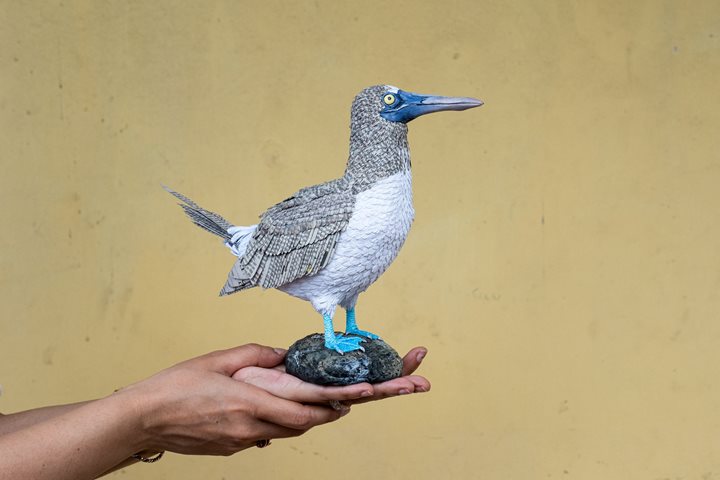After collaborating for more than 20 years to connect curious travelers with transformative experiences, National Geographic and Lindblad Expeditions have agreed to renew their collaboration through 2040. Lindblad Expeditions Founder Sven Lindblad recently sat down with Jill Tiefenthaler, CEO of the nonprofit National Geographic Society, to discuss how the unique collaboration between these two organizations supports the Society’s mission to illuminate and protect the wonder of our world. Get Inspired By Photos, Videos, Webinars, Stories, And Exclusive Offers. Sign Up
The mission of the National Geographic Society is to “use the power of science, exploration, education and storytelling to illuminate and protect the wonder of our world.” How does the mission guide each of you in your work?
JT: Many people are familiar with the media reach of National Geographic, but they often don't realize that we are a mission-driven organization. We support about 3,000 active National Geographic Explorers around the world — scientists, conservationists, educators and storytellers — working to tackle some of the most urgent issues of our time. In addition to monetary support, we supercharge Explorers’ work with resources like training, technical support and amplification opportunities to further share their message with the world.
SL: I've always looked at National Geographic as an essential institution for developing a better understanding of nature, culture and history. I have a wall of National Geographic magazines in my office dating back to 1947. Early in the company’s history, the magazine was the ultimate resource for discovering where to go and who to engage with. We would not be able to provide our guests as rich of an experience were it not for National Geographic. It's been a glorious alliance for more than 20 years.
National Geographic Explorer Agustina Besada of Unplastify, a project supported by the Lindblad Expeditions-National Geographic Fund, aims to include guests in reducing plastics in the ocean. Photo: Doug Gould
How does expedition travel with National Geographic-Lindblad Expeditions support the mission of the Society?
JT: We share a belief with Lindblad that travel is more than recreation; it's an opportunity to see the wonder of the world so that people are inspired to protect it. As National Geographic Explorer and photographer David Doubilet says, "If you want to protect nature, you first have to love it. And if you want to love it, you first have to understand it. And if you want to understand it, you first have to see it." I think travelers with National Geographic-Lindblad Expeditions do just that. They get to see things up close, and as a result, they are often inspired to protect it.
SL: Lindblad Expeditions was founded to help improve the relationship between people and the planet by taking them up close to nature and culture — and so our mission is uniquely aligned with that of the National Geographic Society.
What does it take to become a National Geographic Explorer?
JT: Explorers advance knowledge by leading bold, impactful science and conservation programs, and documenting the wonder of the world and the threats it faces. Explorers also lead education initiatives to inspire the next generation of planetary stewards. They do this through all kinds of projects, from exploring the undersea world to tackling wildlife trafficking. For example, National Geographic in Residence Enric Sala leads global expeditions with his National Geographic Pristine Seas team to help establish new marine protected areas, while National Geographic Explorer Agustina Besada is focused on changing the relationship human beings — particularly youth — have with plastic through her program Unplastify.
When we’re looking for Explorers, we’re looking for people who embody a certain mindset — people with expertise, who are also curious and committed to making the world a better place. They are persistent in the face of challenges, and they are committed to working in teams and communities.
What are the emerging frontiers of oceanic exploration and what can the ocean tell us about the environment at large?
JT: The Earth is more than 70% ocean, and it supports everything we do, so what happens to the ocean has a significant effect not only on nature but on all of us. Two areas of oceanic exploration that we're focused on are the deep sea and the polar regions. Explorer at Large and oceanographer Sylvia Earle often says we know more about Mars than we do the deep sea here on Earth. We're dedicating a lot of interesting work to making progress in understanding its biodiversity and the key role it plays. At the same time, the polar regions are warming rapidly, and research for understanding the extent of that warming in the Arctic and Southern Oceans is very important for climate research.
SL: We're getting a better understanding of the threats to the ocean: pollution, plastic, climate change, overfishing. It's important to figure out how to mitigate those issues. I think science and exploration help enormously in understanding how we can better protect the ocean, and that work is essential to keeping policymakers informed.
National Geographic photographers join select expeditions. How do they enhance storytelling and education on the voyages?
SL: Many of us became interested in different aspects of the world because of the photographs in National Geographic magazine. I've met thousands of people who tell me that those photographs motivated them to dig deeper into a destination. When guests rub shoulders with these photographers — exploring a place alongside them and learning skills they can apply — it’s something they find hugely valuable.
What is the value of bringing younger travelers on an expedition cruise?
SL: I think everybody has the potential to be an explorer in one form or another, and I would like for more people to see themselves that way. Experiences in the wild have the power to ignite the explorer that lies within each of us, and even a small spark in a young person can inspire a lifelong love for exploration and the planet.
Children and adults have very different interests, but nature has a powerful way of bringing families together, creating memories that are talked about forever. My daughter, Isabella, is 28 and she is constantly referencing moments that we've had together in the wild over the years. I just took my two-year-old daughter to the Galápagos for the first time, and there's no question that aspects of what she experienced — sitting next to a sea lion or looking up at the head of a giant tortoise — will manifest at some point in her life.
Dr. Tiefenthaler, have you been on a voyage with National Geographic-Lindblad Expeditions, and can you tell us about your experience?
JT: I have been on several and all have been amazing trips, but my recent voyages to Antarctica and the Galápagos Islands were highlights. I was blown away by the expertise of the staff, and the other guests on board were a naturally curious group — we really bonded and had a wonderful time together.
Mr. Lindblad, you've been on countless voyages, and you’ve visited certain destinations several times. What keeps you coming back to places like the Galápagos and Antarctica?
SL: Nobody has the same experience in nature because it changes every day. I've been to the Galápagos at least 50 or 60 times, and I've never had the same experience twice. I love going back to Antarctica and Alaska because I learn something new and my relationship to these places deepens every time I visit — and I think that's just wonderful.
